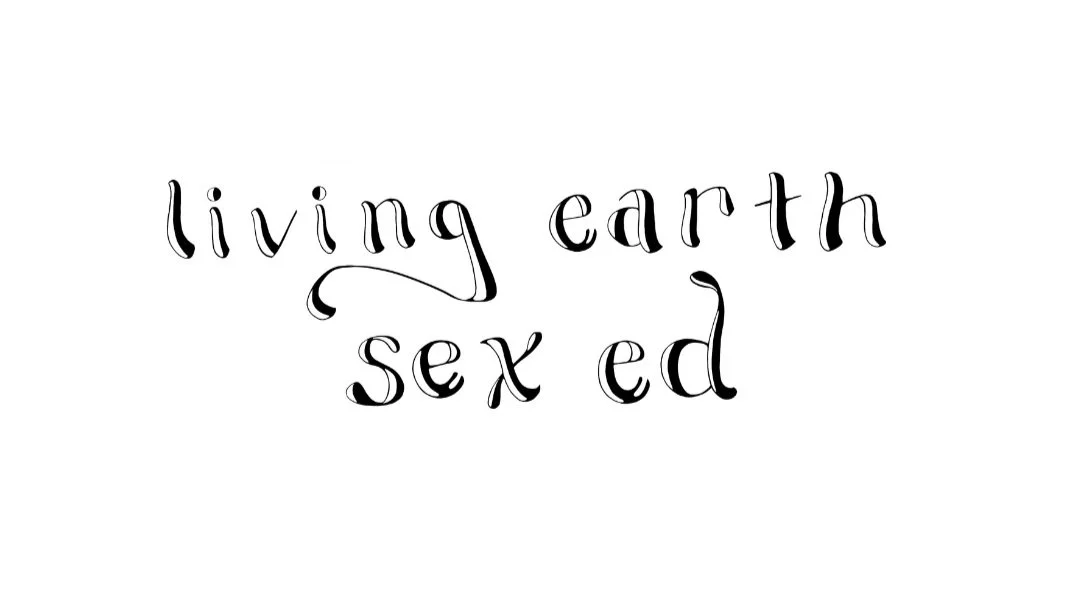Why include the Earth in Sex Education?
Photo by Braden League.
I grew up in Northern California on the Pacific Ocean and in the redwood forests.
I spent many long hours in the company of grasses, trees, the ocean, and the wind with few to no other people around.
The beauty of the land took my breath away over and over. The slow change of colors at the beach during sunset, the movement of fog through trees, the sparkle of dewdrops on spiderwebs, the smell of a river in summer, and the sweetness of blackberries; all made me fall in love with the land.
During my teenage years, I began to notice the types of relationships that people in my community had with the land. Many people were quick to exclaim how beautiful a river was but fell silent as it was dammed. I felt confused how we could turn away from the ever expanding clearcut forests and the plastics that traveled to more and more “wild places.”
I started Living Earth Sex Ed because I have a deep appreciation for the land.
As a European-American, a white woman, I didn’t have many elders or peers who taught me to relate with the land in a non-exploitative way. Many Americans, myself included, separate ourselves from the living world. We see ourselves as the smartest animals while treating all others as less intelligent species. Our cell phones are somehow “unnatural” yet are all made of earthly materials.
When I set out to create my sex ed business in 2022, I struggled to come up with a name that described the type of sex education I wanted to do.
I wanted to be explicit and upfront about the fact that I wanted sex education to help kids not only improve their relationships with themselves and one another but also with the land itself. As a child I felt angry and disappointed that my own community put little to no energy into changing our relationship with the land from a mixture of appreciation, exploitation, and abuse, to a mixture of appreciation, care, and protection.
After brainstorming on my own for several weeks, I sent out a few business name ideas to my community. I looked back at the list of thirty or so names and so many of them are bad: Parents Speak Up, Body Talk, and Storytelling Our Bodies, to name a few. When I hit send, I knew none of them would work.
Several weeks later while visiting Weaving Earth’s website, Living Earth Sex Ed popped into my head loud and clear.
Was it “okay” to include the living earth in a sex education business name? Would people understand what my business was about? Would it turn people away from my services? I had a lot of fear and doubt.
Sofia Smith-Hale, a friend, an artist, and educator gave me the permission I needed to use Living Earth Sex Ed as my business name. She even designed my logo! And thus Living Earth Sex Ed came to be.
Logo designed by artist Sofia Smith-Hale.
I also looked (and still look) to The Native Youth Sexual Health Network for guidance on how to interweave sexuality education with the land. One of the core values of the organization is “Connected to Body, Connected to Land” meaning that “what happens to the land and the environment(s) around us (good, bad and everything) also happens to our bodies and our communities. We need to talk about and work from these connections, because the land speaks through our bodies.”
They are one of the only organizations I know of who interweaves sexual wellness with the wellbeing of the land so clearly. Let me know if you know of other organizations who do so!
Despite having taught over 1000 students in the past few years, I still struggle to incorporate these values in my classes. Most of the teaching I do is for 40-60 minutes with a group of people I have never met. This time constraint makes it really challenging to explore how sexuality is informed by the land.
I named my business Living Earth Sex Ed because I wanted the name of my business to act as a gathering place, calling families together to explore how we can become in better relationship with ourselves, one another, and the living earth.
I’m not sure how the name of my business resonates or doesn’t resonate with the people who come across me and my work.
I’d love to know how the name spoke to you when you first came across it.


